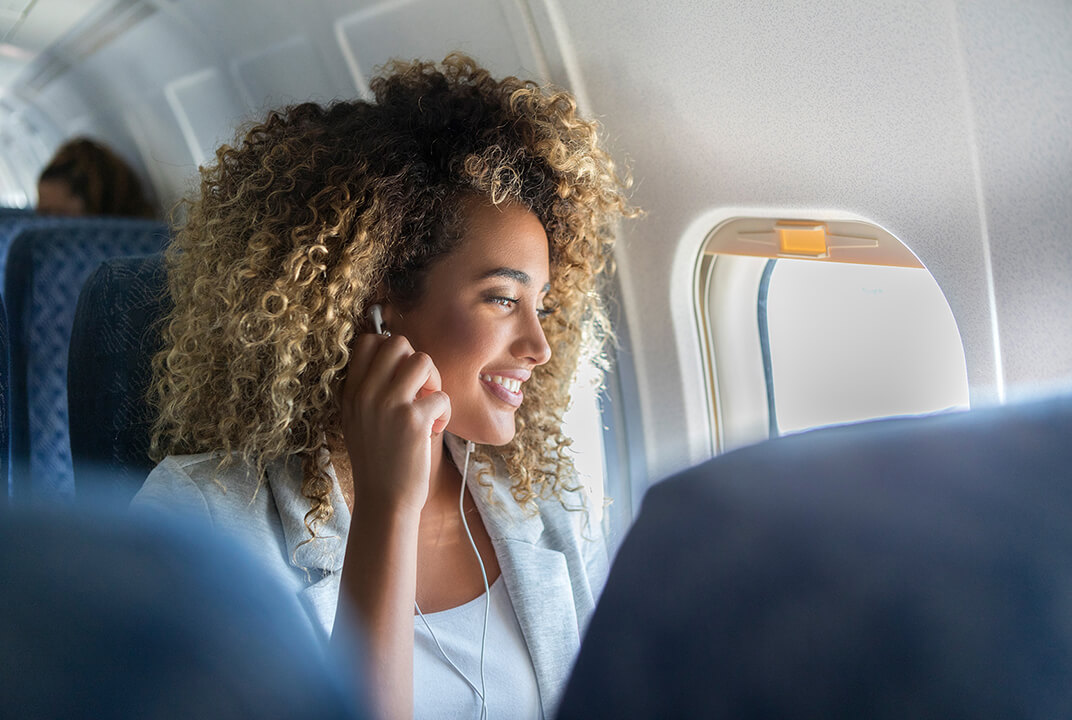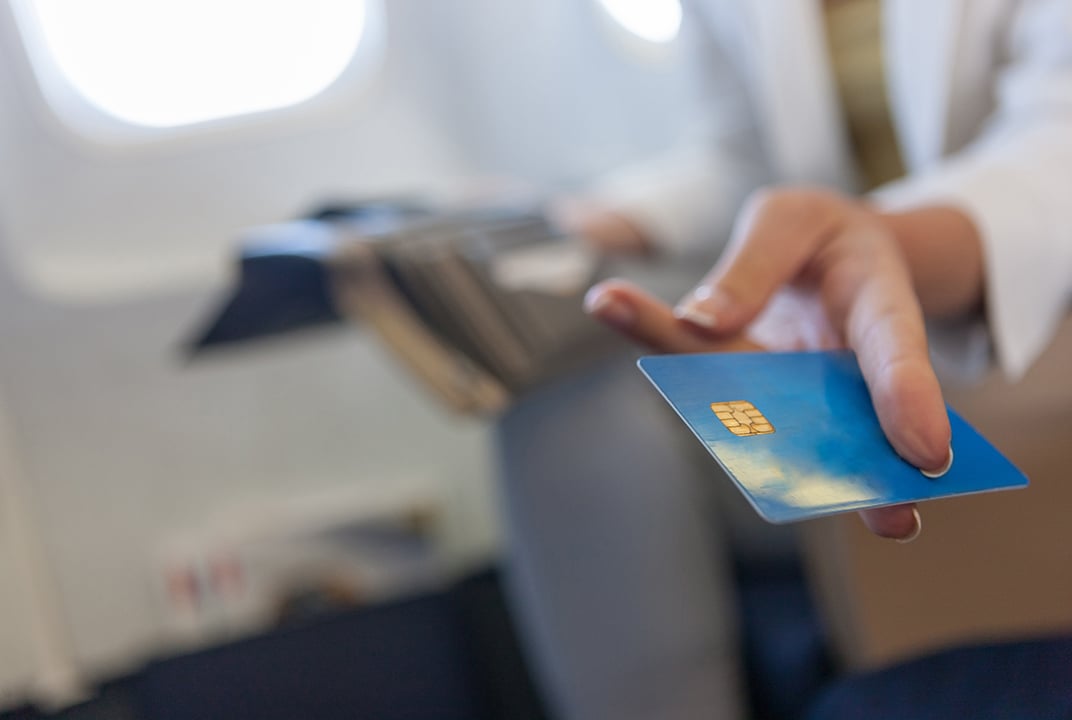Insight | Drawing passengers back with inflight broadband
Drawing passengers back with inflight broadband
Aviation
How sports fans on a recent Vueling flight provided fascinating insights into how passengers are using onboard Wi-Fi powered by our European Aviation Network (EAN).
Our European Aviation Network (EAN) inflight broadband service experienced a noticeable increase in passenger usage during a recent flight from Alicante to Paris, operated by low-cost carrier Vueling. After conducting some data analysis, we discovered that the flight happened to coincide with a much-awaited UEFA Champions League football match between Bayern München and Paris Saint-Germain, which is likely to have caused the higher than usual demand for onboard connectivity, with fans desperate to catch every second of action on the pitch.
Such detailed usage and marketing data by Inmarsat and our partner Deutsche Telekom provide airline customers with a range of valuable information to better understand how our inflight connectivity solutions are performing and how it is being used by their passengers. This, in turn, allows airlines to more specifically identify passenger needs, even before they fly, and customise their service offering accordingly.
Valuable insight
As airlines recover from the impact of the COVID-19 pandemic, the ability to meet evolving customer needs could be a key differentiator that attracts passengers back onto planes. “Low demand means a more competitive environment and providing good Wi-Fi connectivity is a great tool for leveraging an advantage,” explains Philip Balaam, President of Inmarsat Aviation.
Our Passenger Confidence Tracker, the largest global survey of airline passengers since the pandemic began, found that 80% of respondents believe their travel habits will change as a result of COVID-19. Digital solutions are fast-becoming essential to an enjoyable inflight experience, with almost four in ten (39%) agreeing that onboard Wi-Fi matters more today than ever before. Destination status alerts, real time luggage tracking and pre-clearing immigration on the plane - all enabled by cabin connectivity - are among the top new aspects of the journey passengers want to keep post-pandemic. These findings are pretty convincing when it comes to the value of investing in passenger Wi-Fi as a tool for recovery.
Strong market potential
During the global lockdowns, most of us have become more dependent on connectivity to order our shopping, stay entertained and keep in touch with loved ones. As travel restrictions ease, it is highly likely that passengers will expect to extend these dependencies to their time spent in the air.
Usage statistics from EAN powered flights have demonstrated that streaming, shopping and social media top the list of online activities used by passengers accessing our inflight broadband service, with Netflix, YouTube, Amazon, Facebook, Instagram and Spotify registering as most popular, in that order. These statistics suggest that passengers prioritise staying entertained and connected as they fly.
To encourage passengers to regain the confidence to fly, many airlines are making it possible to access onboard services, such as ordering duty-free items or accessing inflight magazines via their online portal using their personal devices. British Airways, for example, recorded a significant rise in inflight Wi-Fi uptake over the summer of 2020 when some travel resumed in Europe, which could be attributed to the exclusive online availability of its popular inflight magazine, indicating that passenger demand for online content is real.
Balaam suggests this ability for airlines to reassure passengers onboard is also a competitive advantage. “Those airlines who have connectivity are going to be able to leverage it in a way that may provide a solution to passenger anxiety and the level of discomfort that can come from the unknown,” he states. “When you have inflight connectivity, airlines are able to leverage that at any stage during the flight as a communication method directly to passengers. And so that’s a way of helping alleviate some of that anxiety.”
Lucrative partnerships
As airlines develop their digital strategies to utilise inflight connectivity during and after the market recovery, they will be looking to form relationships with partners who can meet their passengers’ needs.
“As we look more into usage trends and passenger habits, we are forming the basis for marketing approaches to support airlines in the future,” shares Sonia Berube-Ray, EAN Technology Director at Inmarsat. “For example, based on an airline’s passenger demographic we can decide whether they should focus on the appeal of particular activities, such as eSport or Gaming for instance. We can also get a clearer picture around which sponsors airlines could consider signing up with, to be able to produce the most beneficial deals for all parties.”
As airlines work hard to make up for lost profits since the events of 2020, insight into passenger behaviour and the best way to enhance passenger experience will continue to be priorities in order to attract customers. Supporting airlines to maximise that potential is our priority and we look forward to seeing the green shoots of recovery.


